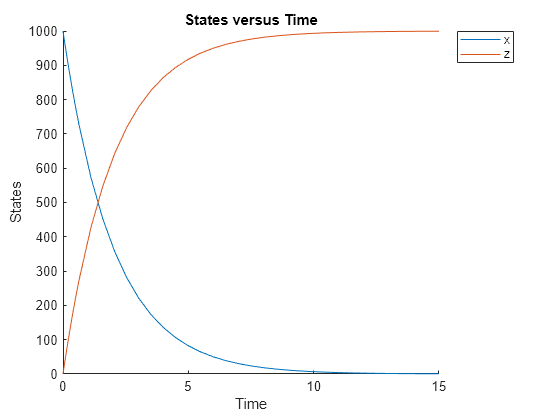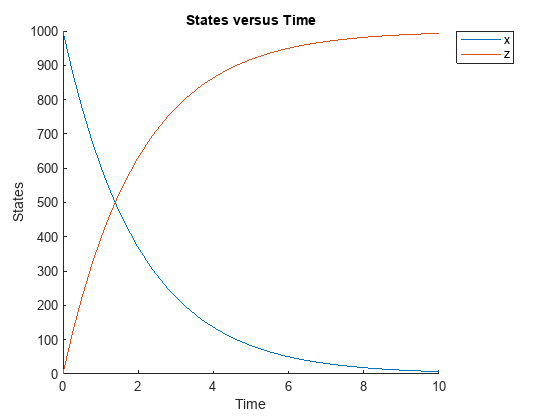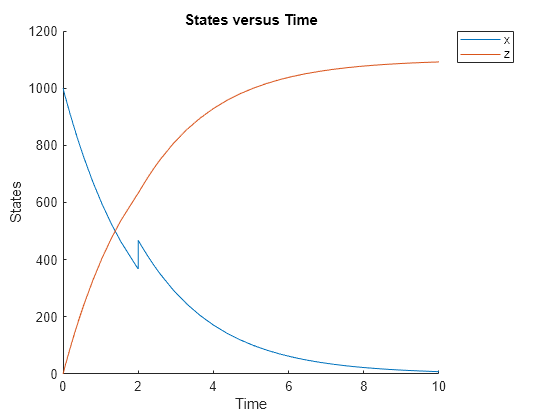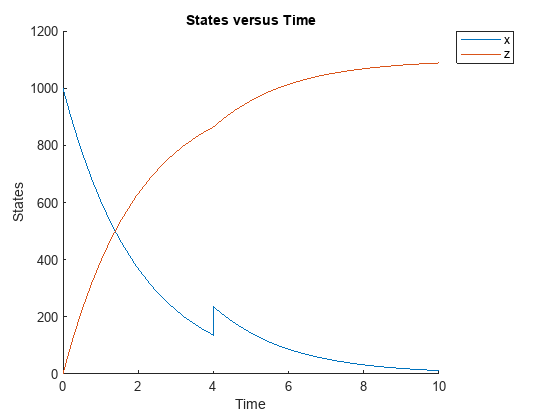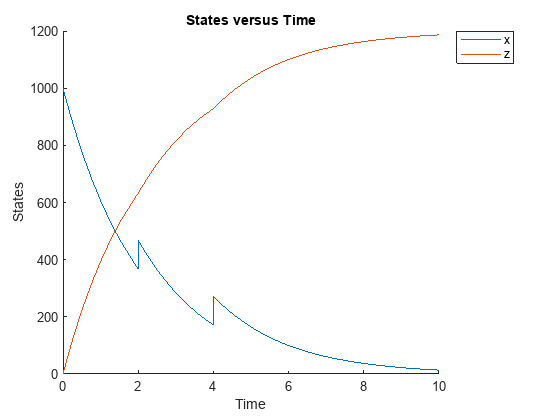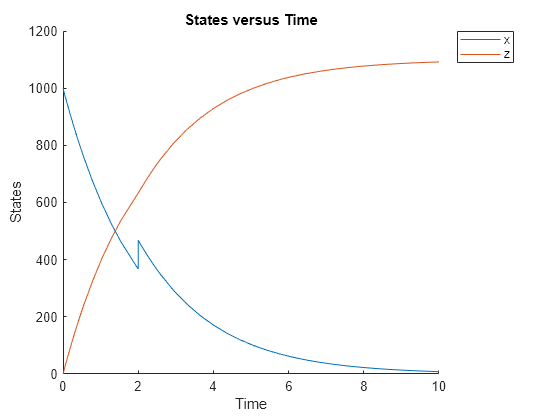sbioaccelerate
Prepare model object for accelerated simulations
Syntax
Description
sbioaccelerate( prepares a model object for
an accelerated simulation using its active configuration set (configset), any
active variants and active doses. A SimBiology® model can contain multiple configsets with only one being active
at any given time. The active configset contains the settings to use in model
preparation for acceleration.modelObj)
For accelerated simulations, use sbioaccelerate before
running sbiosimulate. You must use the same model
and configset for both functions.
Rerun sbioaccelerate, before calling sbiosimulate,
if you modify this model, such as changing reactions or adding events.
However, there are exceptions. For details, see When to Rerun Acceleration.
Note
If you are using a SimFunction object for
simulations, it automatically accelerates the model on its first function
evaluation. Hence it is not necessary to run sbioaccelerate beforehand.
Prerequisites
To prepare your models for accelerated simulations, install and set up a supported compiler. For details, see Prerequisites for Accelerating Simulations and Analyses.
sbioaccelerate(
uses doses or variants specified by modelObj,dvObj)dvObj and the active
configset. dvObj can be one of the following:
array of doses or variants
If you set dvObj to empty [], the
function uses the active configset, active variants, and active doses.
If you specify dvObj as variants, the function uses the
specified variants and active doses. Any other variants are ignored.
If you specify dvObj as doses, the function uses the
specified doses and active variants. Any other doses are ignored.
Currently, a particular dose object can only be accelerated with a single model. You cannot use the same dose object for multiple models to be accelerated. You must create a new copy of the dose for each model.
sbioaccelerate(
uses a configset object modelObj,csObj,dvObj)csObj and doses or variants specified
by dvObj.
If you set csObj to [], then the
function uses the active configset object.
If you set dvObj to [], then the
function uses no variants, but uses active doses.
If you set dvObj to variants, the function uses the
specified variants and active doses. Any other variants are ignored.
If you set dvObj to doses, the function uses the specified
doses and active variants. Any other doses are ignored.
sbioaccelerate(
uses a configset object modelObj,csObj,variantObj,doseObj)csObj, variant object or variant
array specified by variantObj and dose object or dose array
specified by doseObj. Any other configset, doses, and
variants are ignored.
If you set csObj to [], then the
function uses the active configset object.
If you set variantObj to [], then the
function uses no variants.
If you set doseObj to [], then the
function uses no doses.
Examples
Input Arguments
Version History
Introduced in R2010a

